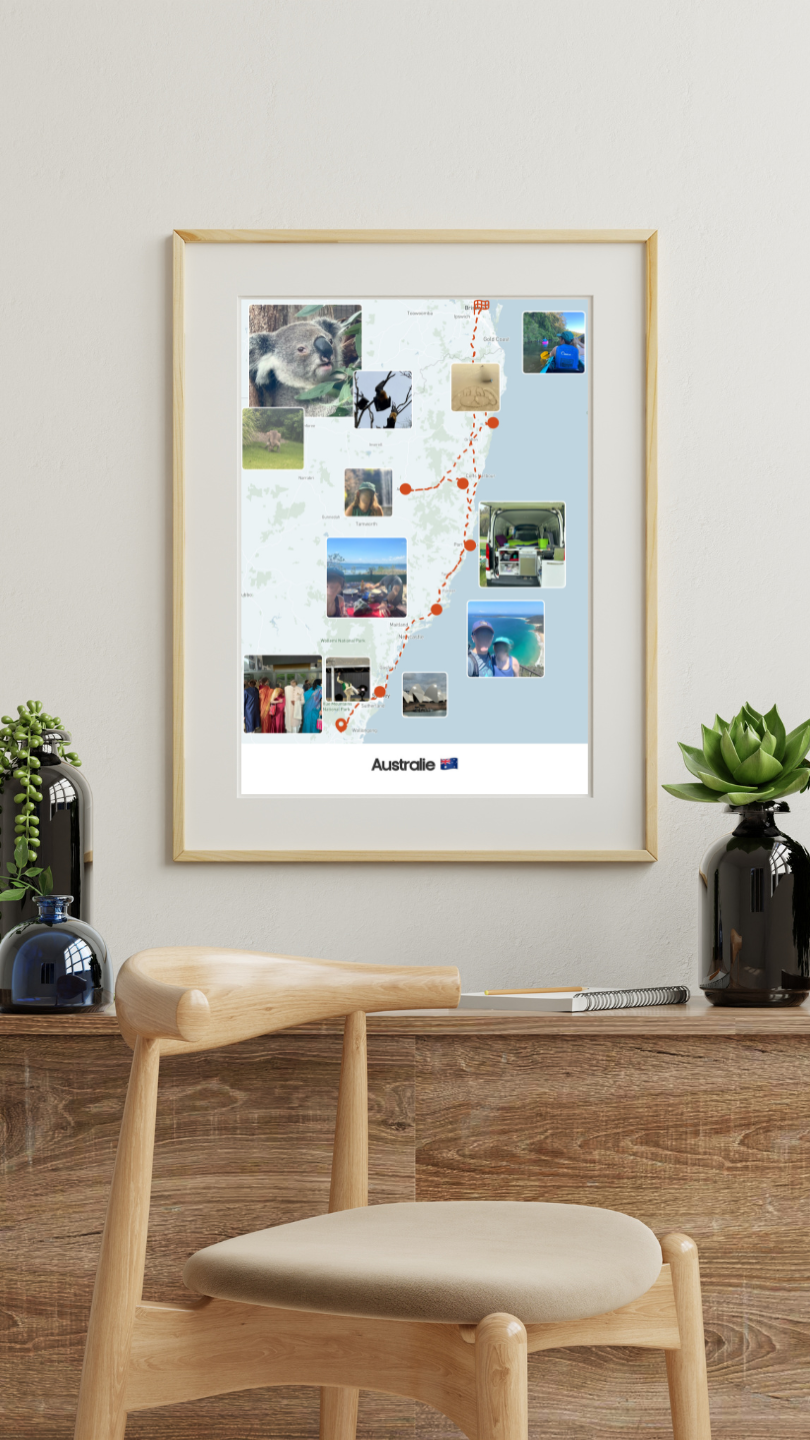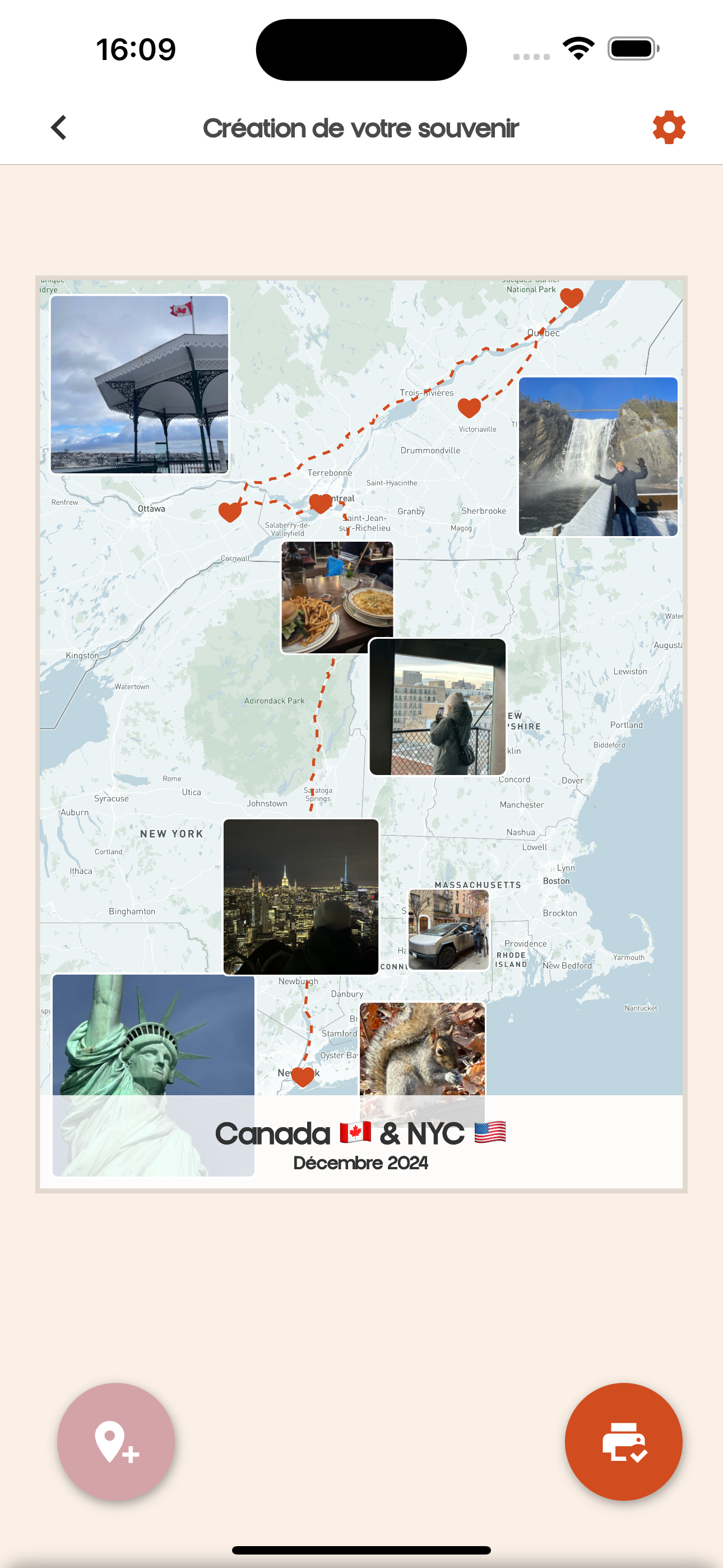In a world where sustainability is becoming a priority, traveling in a minimalist and eco-conscious manner is more important than ever. 🌍 Traveling light and responsibly allows you to reduce your carbon footprint while fully enjoying your experiences. This guide provides practical tips and tricks to adopt this lifestyle during your upcoming adventures.

Introduction - How to travel in a minimalist and eco-conscious way?
Choosing Your Destination Carefully - Traveling Consciously
The first step to minimalist and eco-conscious travel is choosing your destination. Opt for places that emphasize sustainability, such as eco-friendly destinations. For example, Scandinavian countries are often recognized for their sustainable practices. Choose destinations that promote responsible tourism and respect the environment.
Avoid flying whenever possible. Instead, opt for destinations accessible by train or car. This not only reduces CO2 emissions but also allows you to discover new landscapes and enjoy the journey itself.
Preparing a Light Bag - Minimalist Travel
Minimalism starts with a light bag. Before you go, make a list of essential items. Using versatile clothing and small accessories can help you save space and travel lighter. Remember, the less you pack, the more you can enjoy your trip without being weighed down.
Invest in durable items such as fabric bags, reusable bottles, and glass containers. These choices not only lighten your luggage but also help minimize plastic waste. 🔄
Practicing Eco-Friendly Transportation - Traveling for the Planet
Once at your destination, prioritize eco-friendly modes of transportation: biking, walking, or public transit. Not only does this reduce your carbon footprint, but it also allows you to experience the city from a new perspective. Consider using apps to facilitate public transport use.
If your destination is far away, consider carpooling or bus options that are generally more eco-friendly than flying. Modern bus companies are increasingly investing in technologies aimed at reducing CO2 emissions.
Consuming Responsibly - Travel and Ethics
When you travel, make ethical purchasing choices. Support local businesses by choosing markets and local restaurants. This not only reduces transportation costs but also contributes to the local economy. Discover unique culinary specialties and handcrafted products while respecting their culture.
Moreover, find out about the sustainability initiatives of the businesses you choose to travel with. Many hotel chains and restaurants are implementing eco-friendly practices, such as using renewable energy or reducing food waste. 🔍
Disconnecting from the Digital World - Embracing the Present Moment
To truly embrace the minimalist spirit, consider reducing your tech reliance during your travels. Limit your phone usage to focus on your experiences. Enjoy nature, meet locals, and explore without digital distractions.
This doesn’t mean you have to abandon your electronic devices altogether, but try to plan ahead and use your connected time wisely. This fosters a deeper connection with your surroundings and enriches your vacation experience. 💚
Participating in Local Activities - Engaging for a Positive Impact
Each destination offers opportunities for community engagement. Join local activities or volunteer programs that support the environment. This may include beach cleanups, tree planting, or conservation projects.
These enriching experiences not only allow you to contribute positively to the community, but they also create unforgettable memories and authentic connections. 👐
Respecting Wildlife and Flora - Traveling in Harmony with Nature
It is essential to respect local ecosystems when traveling. Avoid disturbing wildlife and flora by following the rules of national parks and staying on marked trails. Do not purchase souvenirs made from wildlife.
Make conscious choices, such as observing animals only in their natural habitats without touching or feeding them. This helps preserve biodiversity and minimize the impact on endangered species. 🌿
Promoting an Eco-Conscious Attitude Back Home - A Meaningful Journey
Your commitment to a minimalist and eco-conscious lifestyle shouldn’t end upon your return. Adopt sustainable practices in your everyday life. Whether it’s continuing to reduce plastic consumption, supporting ethical brands, or participating in local initiatives, many of these habits can be shared with your community, creating additional positive impact.
By teaching others the importance of mindful living, you contribute to a larger community around sustainability. Sharing your travel experiences on social media can also inspire others to do the same. 🌟
Conclusion - Eco-Conscious and Minimalist Travel, an Informed Choice
Traveling in a minimalist and eco-conscious way is not just a trend; it’s a commitment to taking care of our planet and respecting the cultures we visit. Every small gesture counts and contributes to a more sustainable future for tourism. By following these tips, you can make a difference while creating unforgettable experiences during your travels. 🌎✨
FAQ - Traveling in a Minimalist and Eco-Conscious Way
1. What is minimalist travel?
Minimalist travel involves reducing your personal belongings to the minimum and focusing on essentials. This includes using lightweight luggage, choosing meaningful activities, and adopting a sustainable lifestyle. This travel approach promotes freedom and flexibility while minimizing environmental impact.
2. How do I choose an eco-conscious destination?
Choosing an eco-conscious destination involves researching places that emphasize sustainable tourism. Check eco-friendly destination rankings, learn about local sustainability efforts, and choose spots that support environmental education and biodiversity protection.
3. What should I pack for light travel?
To travel light, opt for versatile clothing and outfits that mix well. Include reusable products like a water bottle and mug. A compact backpack and biodegradable cosmetics are also recommended to minimize environmental impact.
4. What are eco-friendly transportation practices?
Eco-friendly transportation practices include walking, biking, and using public transit. If flying is necessary, prefer carpooling or bus services, which are also important for reducing greenhouse gas emissions.
5. How to support the local economy while traveling?
Support the local economy by choosing independent restaurants and hotels, visiting local markets, and learning about local artisans in the areas you travel to. These choices not only benefit the community but also enrich your cultural experiences.
6. Why is it important to disconnect while traveling?
Disconnecting from technology while traveling enables you to focus on the present moment. It fosters more authentic interactions with people and culture while providing space to appreciate nature without the usual distractions of smartphones and social media.
7. What local activities can I engage in for a positive impact?
Join local volunteer programs, participate in beach clean-ups, or engage in conservation initiatives while traveling. Getting involved in projects that support the community or environment is a fulfilling way to promote sustainable development in the long term.
8. How do I respect wildlife and flora while traveling?
Respect wildlife and flora by adhering to the rules of national parks, staying on marked paths, and avoiding touching protected species. Opt for wildlife observation experiences that do not harm their natural habitat.
9. What can I do after my trip to continue an eco-friendly lifestyle?
After your trip, you can maintain an eco-friendly lifestyle by sharing your experiences, engaging in local initiatives, and educating your community about the importance of sustainable practices. These simple yet impactful actions contribute to sustainable tourism.
10. What are the benefits of eco-conscious travel?
Eco-conscious travel offers many advantages, such as reducing environmental impact, supporting local economies, and promoting cultural preservation. It also leads to richer and more meaningful experiences, often off the beaten track, fostering a more authentic connection with the places visited.






